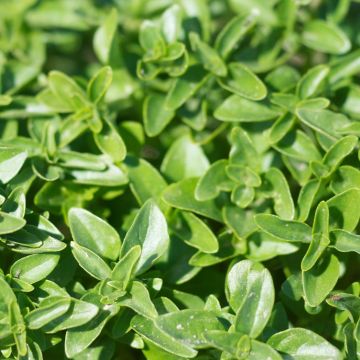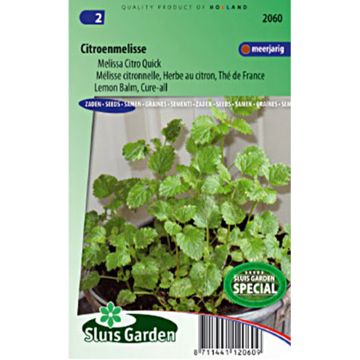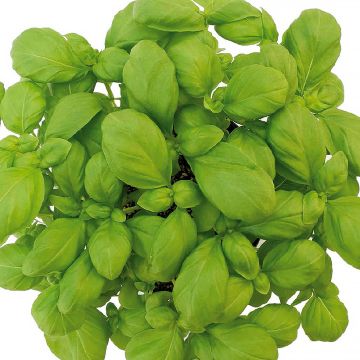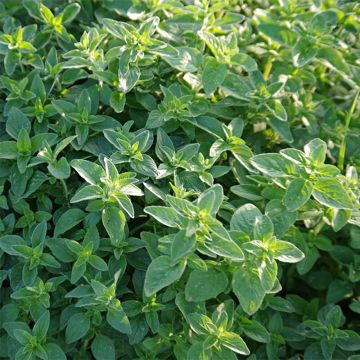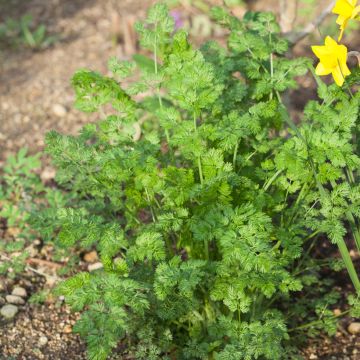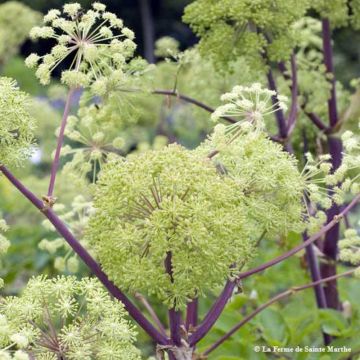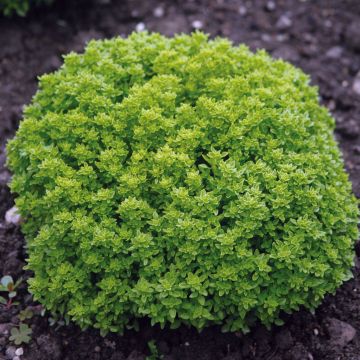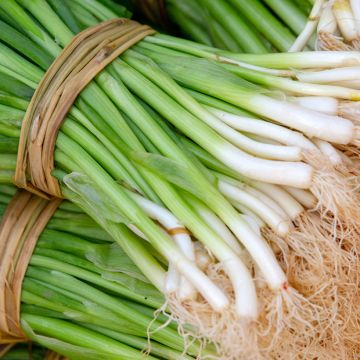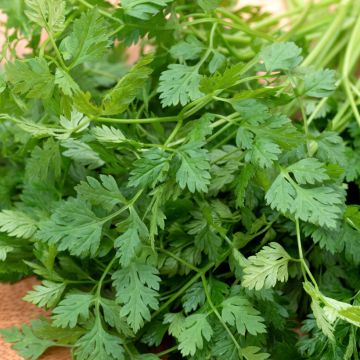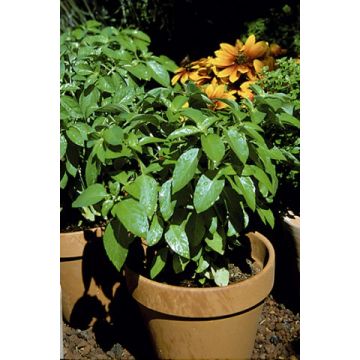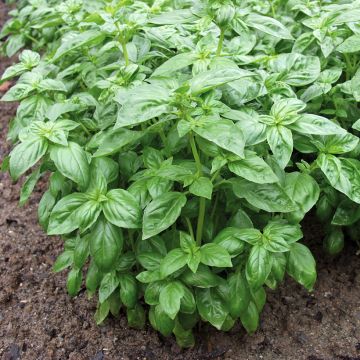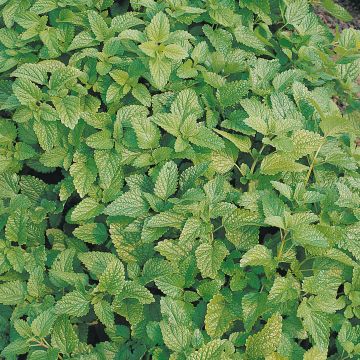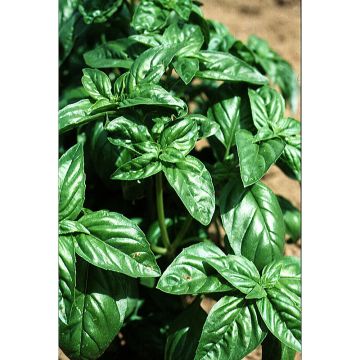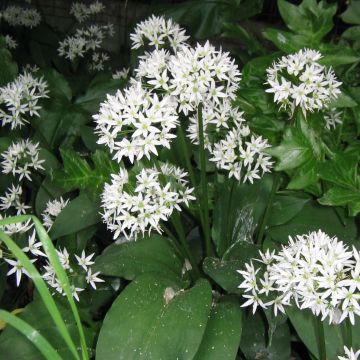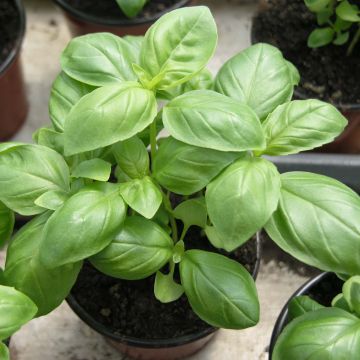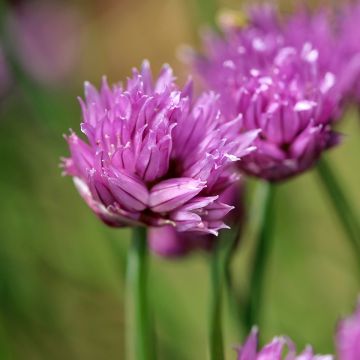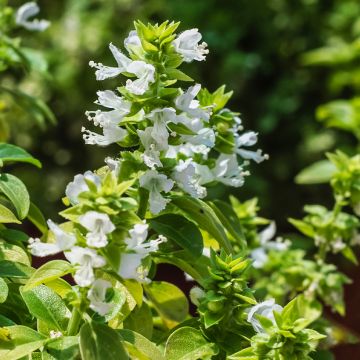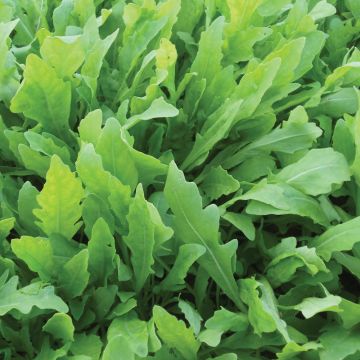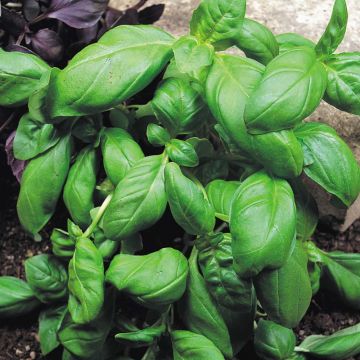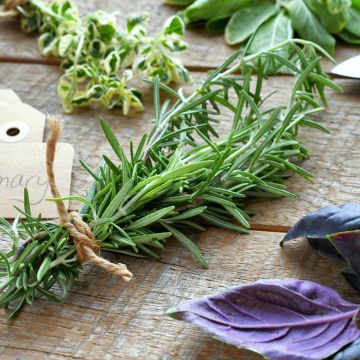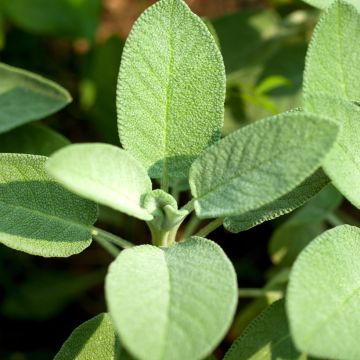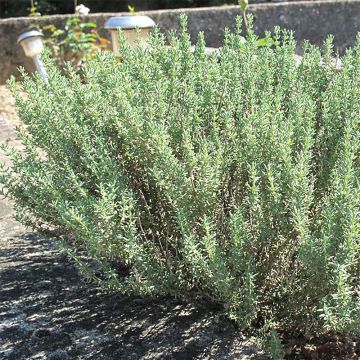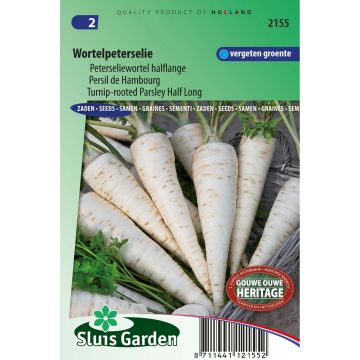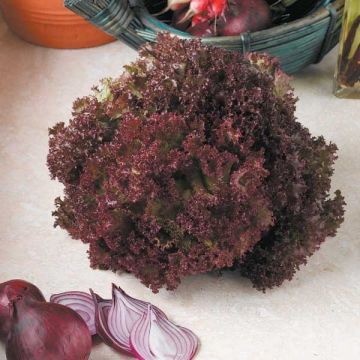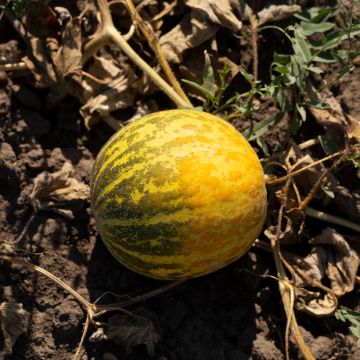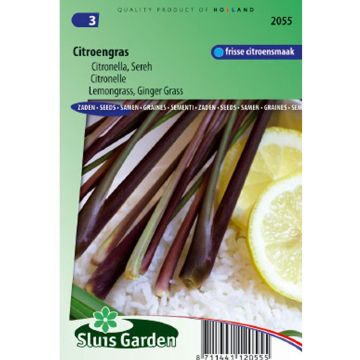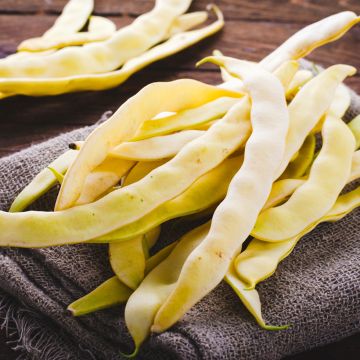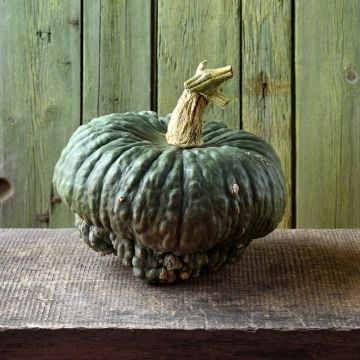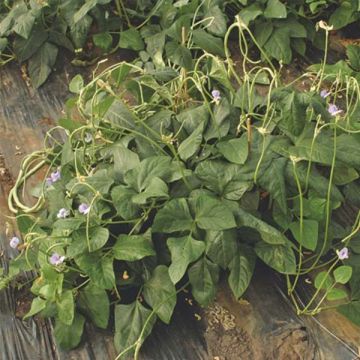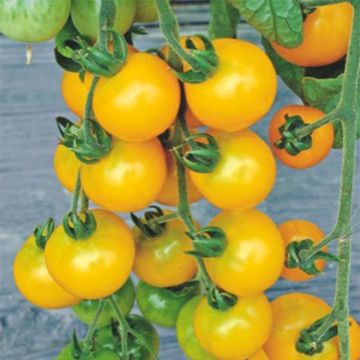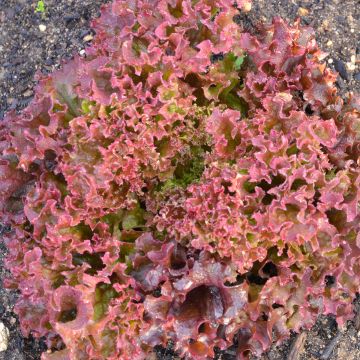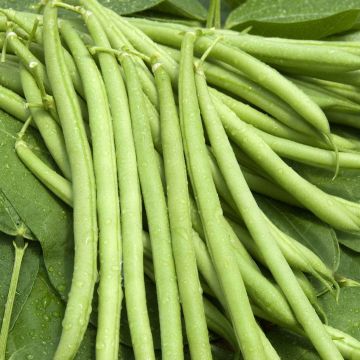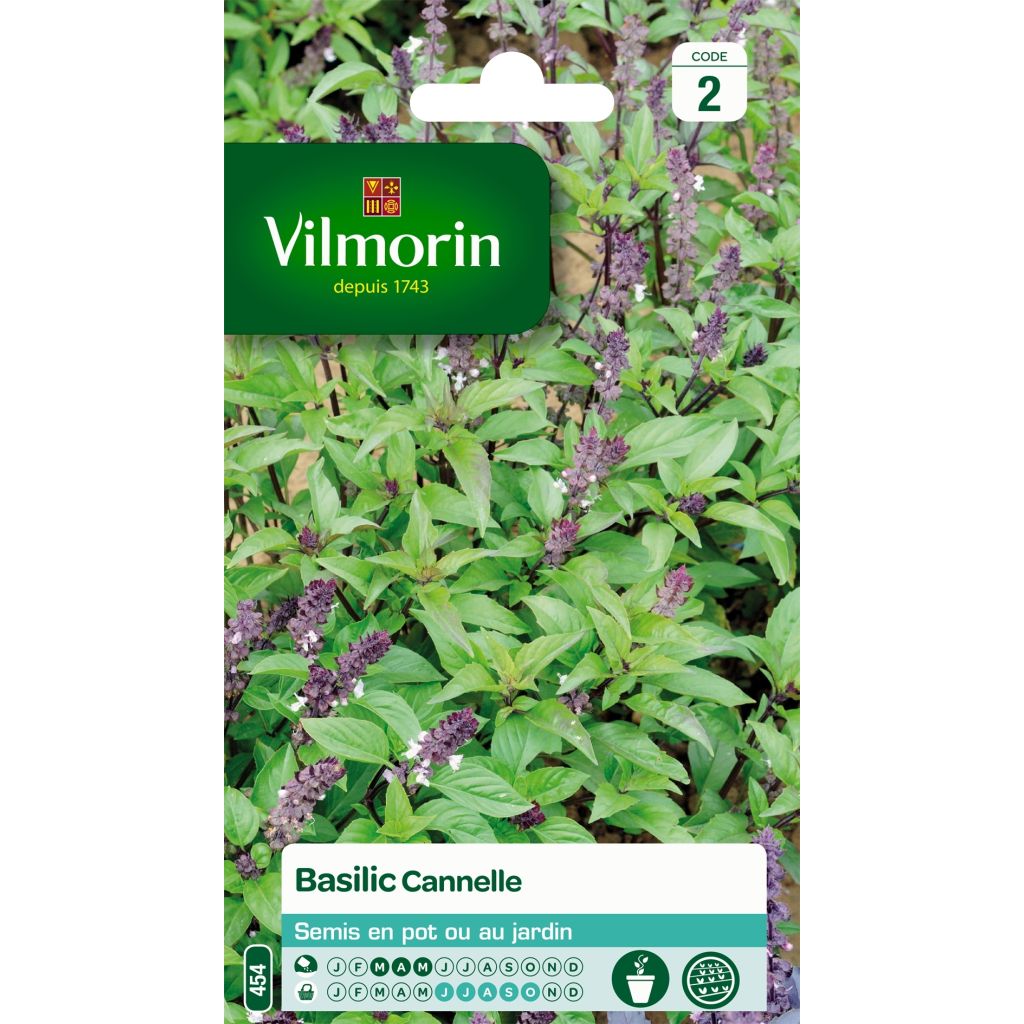

Basilic Cannelle - Vilmorin
Cinnamon Basil - Vilmorin Seeds
Ocimum basilicum
Basil
Why not try an alternative variety in stock?
View all →This plant carries a 6 months recovery warranty
More information
We guarantee the quality of our plants for a full growing cycle, and will replace at our expense any plant that fails to recover under normal climatic and planting conditions.
Seed-only orders are dispatched by sealed envelope. The delivery charge for seed-only orders is €3.90.
Description
Cinnamon Basil is a fascinating variety with medium-sized leaves and a compact habit, native to Mexico. When eaten raw, its oval leaves give off a distinctive aroma of cinnamon and cloves. They are fabulous finely chopped on salads. This variety is suited to growing in pots and containers. Sow from March to April for a harvest from the end of May to October.
Basil is native to the tropical regions of Asia and Africa and has been used in the Mediterranean region since Antiquity. Romans hailed it as the symbol of love... whereas Ancient Greeks considered basil to be the plant of hatred and misfortune! Depending on the variety, plants will reach 30-50 cm in height. Like most members of the Lamiaceae family, the erect, branched stems are square. The leaves of this delightful herb can be eaten fresh or dried. They are widely used in salads, marinades or pesto to accompany pasta, meat or fish. As well as being rich in essential oils, basil has anti-bacterial, anti-inflammatory and stimulating properties.
Harvesting and storage: for immediate use, harvest the leaves as and when required from July to October. Basil will stay fresh for a few days in a glass filled with water, away from direct sunlight. It can also be dried and kept in an airtight jar, although it will inevitably lose some of its aroma.
Good to know: Basil benefits from a supply of well-rotted compost (3 kg/m²) in late autumn or early spring. Weed and hoe regularly to keep the weeds down. Pinching the flowering stems will lead to a bushier plant. The smell of basil leaves is a well-known mosquito repellent!
Report an error about the product description
Harvest
Plant habit
Foliage
Botanical data
Ocimum
basilicum
Lamiaceae
Basil
Cultivar or hybrid
Annual
Other Herb seeds
Planting and care
Sowing:
Basil likes a cool, moist, well-drained soil. It does best in part-shade as direct sunlight tends to burn the leaves. Basil can be grown both in the vegetable garden or in a pot in the veranda or on the balcony.
Direct sow in the Spring, from March to May. Lightly scatter the seeds in shallow furrows, about 10 cm wide and 2 cm deep. Leave about 25 cm between each row. Cover with soil and gently water. When the seedlings appear 10-15 days later, thin out the weakest ones. For longer harvests, stagger your sowing.
Alternatively, sow the seeds in pots and transplant when the seedlings reach about 10 cm in height (4-6 leaves). If you have a sunny spot in your kitchen such as the window sill, you can also choose to leave the basil in the pot to keep it closer to hand!
Care:
When the soil gets too dry, make sure to water your basil plants. Lack of water (hydric stress) will make them go to seed. Preventive mulching is also a good idea. Pinch out the flower heads as soon as they appear to encourage the plant to put out new leaves.
Basil is susceptible to powdery mildew, bacterial leaf spot and aphids. You can reduce the chances of this being an issue by watering your plants less often and thinning out the rows. Protect your plants from aphids by spraying them with a mixture of water and olive oil.
Seedlings
Care
Intended location
This item has not been reviewed yet - be the first to leave a review about it.
Vegetable seeds
Haven't found what you were looking for?
Hardiness is the lowest winter temperature a plant can endure without suffering serious damage or even dying. However, hardiness is affected by location (a sheltered area, such as a patio), protection (winter cover) and soil type (hardiness is improved by well-drained soil).

Photo Sharing Terms & Conditions
In order to encourage gardeners to interact and share their experiences, Promesse de fleurs offers various media enabling content to be uploaded onto its Site - in particular via the ‘Photo sharing’ module.
The User agrees to refrain from:
- Posting any content that is illegal, prejudicial, insulting, racist, inciteful to hatred, revisionist, contrary to public decency, that infringes on privacy or on the privacy rights of third parties, in particular the publicity rights of persons and goods, intellectual property rights, or the right to privacy.
- Submitting content on behalf of a third party;
- Impersonate the identity of a third party and/or publish any personal information about a third party;
In general, the User undertakes to refrain from any unethical behaviour.
All Content (in particular text, comments, files, images, photos, videos, creative works, etc.), which may be subject to property or intellectual property rights, image or other private rights, shall remain the property of the User, subject to the limited rights granted by the terms of the licence granted by Promesse de fleurs as stated below. Users are at liberty to publish or not to publish such Content on the Site, notably via the ‘Photo Sharing’ facility, and accept that this Content shall be made public and freely accessible, notably on the Internet.
Users further acknowledge, undertake to have ,and guarantee that they hold all necessary rights and permissions to publish such material on the Site, in particular with regard to the legislation in force pertaining to any privacy, property, intellectual property, image, or contractual rights, or rights of any other nature. By publishing such Content on the Site, Users acknowledge accepting full liability as publishers of the Content within the meaning of the law, and grant Promesse de fleurs, free of charge, an inclusive, worldwide licence for the said Content for the entire duration of its publication, including all reproduction, representation, up/downloading, displaying, performing, transmission, and storage rights.
Users also grant permission for their name to be linked to the Content and accept that this link may not always be made available.
By engaging in posting material, Users consent to their Content becoming automatically accessible on the Internet, in particular on other sites and/or blogs and/or web pages of the Promesse de fleurs site, including in particular social pages and the Promesse de fleurs catalogue.
Users may secure the removal of entrusted content free of charge by issuing a simple request via our contact form.
The flowering period indicated on our website applies to countries and regions located in USDA zone 8 (France, the United Kingdom, Ireland, the Netherlands, etc.)
It will vary according to where you live:
- In zones 9 to 10 (Italy, Spain, Greece, etc.), flowering will occur about 2 to 4 weeks earlier.
- In zones 6 to 7 (Germany, Poland, Slovenia, and lower mountainous regions), flowering will be delayed by 2 to 3 weeks.
- In zone 5 (Central Europe, Scandinavia), blooming will be delayed by 3 to 5 weeks.
In temperate climates, pruning of spring-flowering shrubs (forsythia, spireas, etc.) should be done just after flowering.
Pruning of summer-flowering shrubs (Indian Lilac, Perovskia, etc.) can be done in winter or spring.
In cold regions as well as with frost-sensitive plants, avoid pruning too early when severe frosts may still occur.
The planting period indicated on our website applies to countries and regions located in USDA zone 8 (France, United Kingdom, Ireland, Netherlands).
It will vary according to where you live:
- In Mediterranean zones (Marseille, Madrid, Milan, etc.), autumn and winter are the best planting periods.
- In continental zones (Strasbourg, Munich, Vienna, etc.), delay planting by 2 to 3 weeks in spring and bring it forward by 2 to 4 weeks in autumn.
- In mountainous regions (the Alps, Pyrenees, Carpathians, etc.), it is best to plant in late spring (May-June) or late summer (August-September).
The harvesting period indicated on our website applies to countries and regions in USDA zone 8 (France, England, Ireland, the Netherlands).
In colder areas (Scandinavia, Poland, Austria...) fruit and vegetable harvests are likely to be delayed by 3-4 weeks.
In warmer areas (Italy, Spain, Greece, etc.), harvesting will probably take place earlier, depending on weather conditions.
The sowing periods indicated on our website apply to countries and regions within USDA Zone 8 (France, UK, Ireland, Netherlands).
In colder areas (Scandinavia, Poland, Austria...), delay any outdoor sowing by 3-4 weeks, or sow under glass.
In warmer climes (Italy, Spain, Greece, etc.), bring outdoor sowing forward by a few weeks.

































